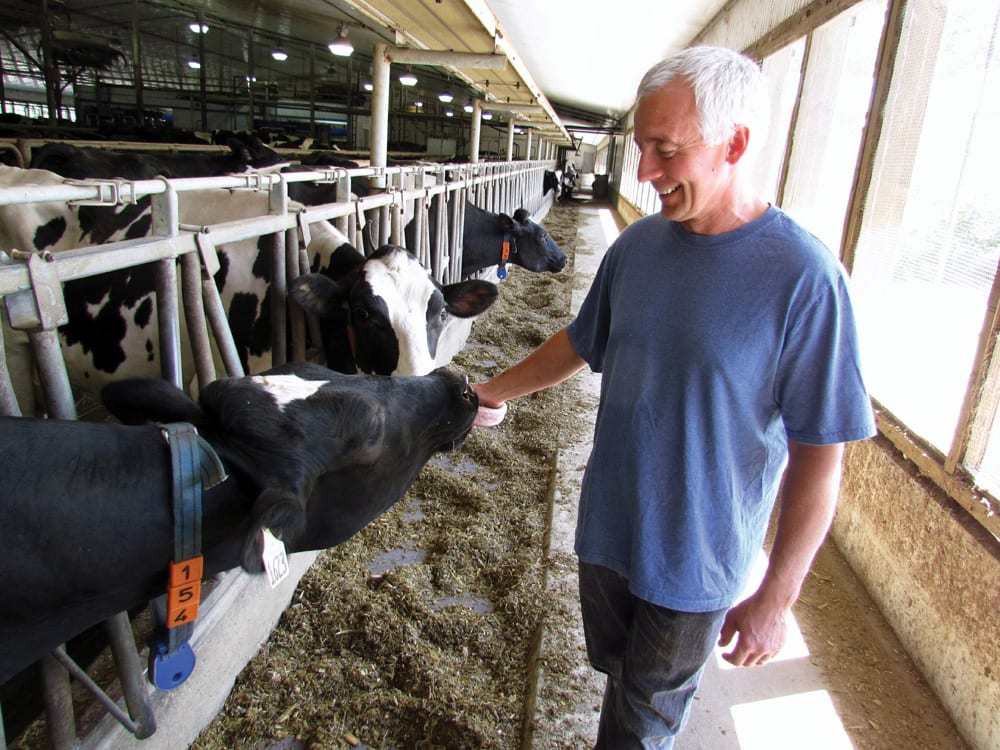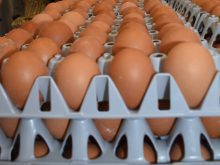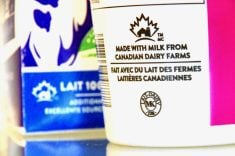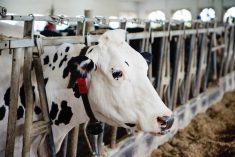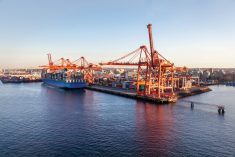Dairy farmers in Alberta and across Canada are considering whether there’s a future in their sector — or if they should get out of the business, say farm leaders.
Some may do that before the year is out, said David Wiens, vice-president of Dairy Farmers of Canada.

“Over the next few months as we look at what our future prospects are as an industry, that’s when farm families will be making those decisions,” said Wiens, a third-generation dairy farmer from southern Manitoba.
“I’ve heard from farmers wondering if they should encourage their children to stay in the industry. Families are asking those questions.”
Alberta Milk chair Tom Kootstra also said he’s heard from producers wondering if they still have a future in the dairy industry after the United States-Mexico-Canada Agreement (USMCA) opened up more of the Canadian market and dismantled a milk class created to soak up an oversupply of skim milk.

“Under these various trade agreements today, we’ve lost about 10 per cent of the Canadian market — three per cent here, three per cent there, another three per cent there,” said the Ponoka-area farmer, referring to trade deals with Europe and Trans-Pacific countries that also increased tariff-free access.
“It does leave us with a sense of pessimism about our opportunities.”
But how the situation will play out is still up in the air, he added.
“Any time there’s a significant policy change like this, those producers who are just looking for one more excuse to make the decision to exit will finally exercise that option,” said Kootstra.
“It will be interesting to see over the next several months if the number of producers exiting the industry increases. It’s too soon to tell.”
Read Also
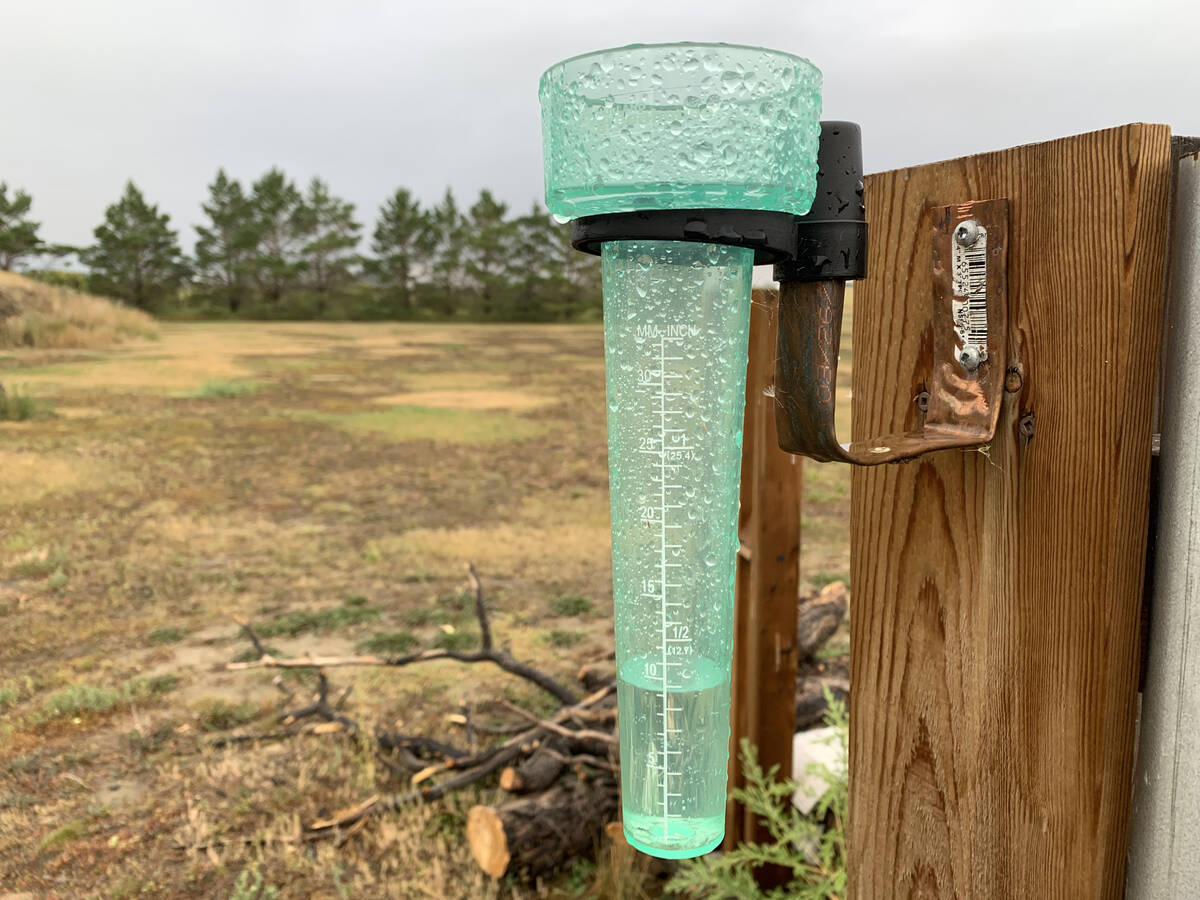
Southeastern Prairies get drought relief in September
September drought monitor from Agriculture and Agri-food Canada shows welcomed precipitation in coastal B.C. and southeastern prairies
Details murky
That’s partly because there are many questions about the details of the USMCA, which was agreed to in principle by the federal government on Sept. 30.
It’s known that it will eliminate Class 7, a category for milk protein isolates created to stem an influx of American product called diafiltered milk that can be used to make cheese. It was also a way to deal with a surplus of skim milk left over when butterfat — which is in high demand — was extracted.
“It’s our understanding that Class 7 must be replaced,” said Kootstra. “That will be a challenge, and that challenge is being met by a group of producers and processors putting their best minds together. We will figure it out.”
A committee of producers and processors has been struck to find a solution to the surplus protein issue but despite Kootstra’s faith in them, it’s not clear there is one.
“In order to meet the butterfat requirements of the Canadian marketplace, there will be a surplus on the protein side,” said Wiens. “Over the next few months, we’ll need to see if there’s a way we can still sell that surplus protein.”
And that’s not the only question up in the air.
Nearly two weeks after the agreement was struck, Canadian dairy industry officials still haven’t received the Canadian version of the document. They have, however, reviewed the American text — and found some key differences in how the agreement has been interpreted by both sides.
“Apparently the American version is not what the Canadians had interpreted,” said Kootstra. “It emphasizes that the way this trade deal came down at the eleventh minute of the eleventh hour is just a poor way to do business.”
In its review of the agreement, the dairy industry concluded that the 3.6 per cent increase in tariff-free access granted to the United States is actually closer to 3.9 per cent — a loss of revenue of $192 million.
“The four per cent access that was given reflects all of Manitoba’s production,” said Wiens. “This is much bigger than it seemed on first glance.”
Industry uncertainty
Farmers aren’t the only ones who are less enthusiastic about investing in Canada’s dairy industry because of the trade deal. Processors who were in talks to invest in Alberta put those discussions on hold several months ago as they awaited the outcome of the trade negotiations, said Kootstra.
“The focus has always been on the primary producer — but it’s also our major processors that are impacted,” he said. “As our market erodes, so does their market. We need processors to feel confident about our Canadian industry in order to invest.
“If we produce the milk and there’s no place to process it, we’re still in a bind.”
Any investment in the dairy industry — from either processors or farmers — will likely be on hold until the full implications of the trade agreement are ironed out.
“We’re still trying to understand fully how much it will negatively affect the dairy industry,” said Wiens.
Another concern is a clause that requires any country in the agreement to inform the other two if it intends to start trade negotiations with a country deemed to have a “non-market” economy. If either decides a proposed deal with such a country will impact trade among them, it can terminate the trilateral USMCA and form a bilateral agreement instead.
Since neither Canada and Mexico would walk away from their largest trading partner, it effectively gives Washington a veto over any future trade deal struck by either country, critics say.
“It’s really beyond comprehension — that our government would give up our sovereignty over trade negotiations to a third party,” said Kootstra. “We’re hearing that the Canadian texts will show that we have not given up all of our sovereignty over domestic dairy and trade, so we’re anxious to see what the Canadian text looks like.
“That’s an example of one of the topics we need to better understand.”
The language of the deal adds to the challenge of finding a way to deal with the skim milk surplus other than severely discounting and selling it as animal feed.
What’s clear is the sector won’t be able to just create a new and improved Class 7, said Wiens.
“If we come up with another scheme or change our milk class prices, we have to allow the Americans to review it first and agree with it. They’ve locked this down pretty tight,” he said.
“That’s a clear indication of how Canada has relinquished its food sovereignty. It’s going to allow another country to dictate how we run what has been a very successful agriculture industry in Canada.”
What next?
On top of all those types of issues is the question of future growth in the dairy sector.
“The industry grows at about three per cent annually, but now the growth that would naturally happen will need to be shared with dairy farmers outside of Canada,” said Kootstra.
“As our market is shared with other players and as our opportunity to benefit from natural growth is compromised by these trade deals, it leaves producers with a less optimistic perspective.”
Prime Minister Justin Trudeau and Foreign Affairs Minister Chrystia Freeland have both promised compensation for dairy farmers, but haven’t offered details of what that might look like.
“We’re going to be working with them over the coming weeks and months to figure out exactly what is the compensation they need,” Trudeau told reporters after a meeting with dairy officials earlier this month.
“Is it a one-time cash payment for lost opportunities? Or is it some program that will help us maintain competitiveness going forward? Is it investment in a branding exercise?” asked Kootstra.
“There are a lot of questions around what compensation might look like. But I would hope that compensation will mean support and investment in programs long term as opposed to a one-time cash payment.
“This trade deal gives up market access in perpetuity. It’s not just a one-time transaction.”
Any compensation needs to address those future losses, Wiens added.
“It will be very hard to actually replace the loss of production that farmers will face and the added cost that they’re putting on farmers,” he said. “Compensation needs to truly reflect the true impact of these concessions. Unfortunately, I don’t think there’s a very good understanding of what was actually lost.”
While there are still more questions than answers about the new North American trade deal, one thing is certain — the dairy industry will need to come together to chart out a new course for the future, said Wiens.
“As an industry, we need to move forward somehow. We have to find a way forward,” he said.
That will require patience — and a healthy dose of optimism — as producers wait to see how the next few months shake out, Kootstra added.
“We are agricultural producers, and when you’re engaged in agricultural production, you need to be an eternal optimist. So we’ll try to be optimistic about the future in spite of these trade deals.”

